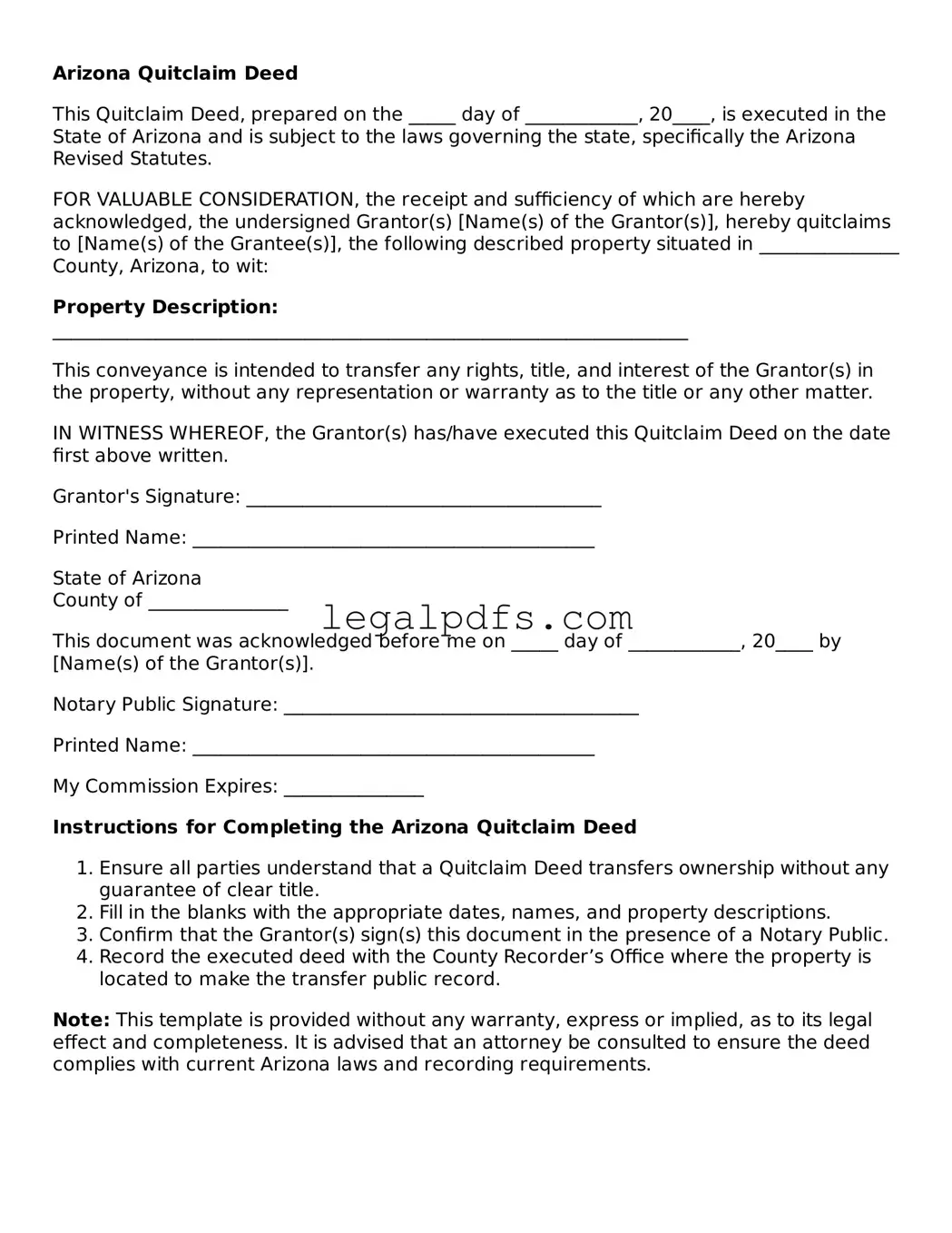Arizona Quitclaim Deed
This Quitclaim Deed, prepared on the _____ day of ____________, 20____, is executed in the State of Arizona and is subject to the laws governing the state, specifically the Arizona Revised Statutes.
FOR VALUABLE CONSIDERATION, the receipt and sufficiency of which are hereby acknowledged, the undersigned Grantor(s) [Name(s) of the Grantor(s)], hereby quitclaims to [Name(s) of the Grantee(s)], the following described property situated in _______________ County, Arizona, to wit:
Property Description: ____________________________________________________________________
This conveyance is intended to transfer any rights, title, and interest of the Grantor(s) in the property, without any representation or warranty as to the title or any other matter.
IN WITNESS WHEREOF, the Grantor(s) has/have executed this Quitclaim Deed on the date first above written.
Grantor's Signature: ______________________________________
Printed Name: ___________________________________________
State of Arizona
County of _______________
This document was acknowledged before me on _____ day of ____________, 20____ by [Name(s) of the Grantor(s)].
Notary Public Signature: ______________________________________
Printed Name: ___________________________________________
My Commission Expires: _______________
Instructions for Completing the Arizona Quitclaim Deed
- Ensure all parties understand that a Quitclaim Deed transfers ownership without any guarantee of clear title.
- Fill in the blanks with the appropriate dates, names, and property descriptions.
- Confirm that the Grantor(s) sign(s) this document in the presence of a Notary Public.
- Record the executed deed with the County Recorder’s Office where the property is located to make the transfer public record.
Note: This template is provided without any warranty, express or implied, as to its legal effect and completeness. It is advised that an attorney be consulted to ensure the deed complies with current Arizona laws and recording requirements.
